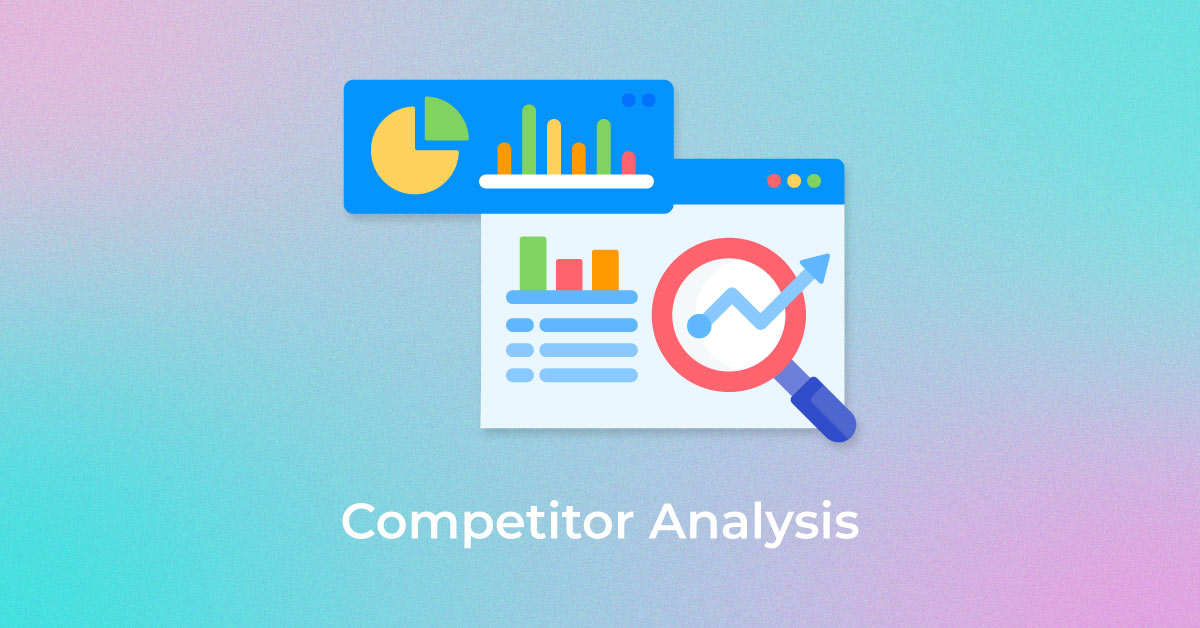In the rapidly evolving digital landscape, staying ahead of the competition is crucial for businesses aiming to thrive. Social media platforms have become battlegrounds for companies, where they not only interact with their audience but also keep a close eye on their competitors. In this article, we will delve into the world of social media analysis of competitors, uncovering essential strategies for success.
Social Media Analysis of Competitors: Unveiling Strategies for Success

Importance of Social Media Analysis
Understanding your competitors’ social media strategies provides invaluable insights into their strengths and weaknesses. By analyzing their online presence, businesses can identify trends, customer preferences, and potential gaps in the market.
Identifying Competitors in the Digital Landscape
Before diving into analysis, it’s essential to identify your competitors in the vast digital landscape. Utilize market research tools and industry knowledge to compile a comprehensive list of competitors.
Analyzing Competitors’ Social Media Presence
– Overview of Competitors’ Platforms
Begin by assessing the social media platforms your competitors are active on. Analyze their follower count, post frequency, and engagement levels across platforms like Facebook, Twitter, Instagram, and LinkedIn.
– Content Strategy Assessment
Evaluate the type of content your competitors are posting. Are they focusing on videos, infographics, or blog posts? Identify which content formats resonate most with their audience.
– Audience Engagement Analysis
Dive deep into the comments, likes, and shares your competitors receive. Analyze the tone of interactions and identify common themes to understand what appeals to their audience.
Social Media Competitor Analysis Tools
Explore various tools like AIM Insights, SEMrush, and Sprout Social to gather data efficiently. Utilize techniques like sentiment analysis and social listening to extract meaningful insights from customer conversations.
Extracting Insights from Data
– Identifying Trends and Patterns
Look for recurring themes and trends in your competitors’ content. Identify topics that generate significant engagement and align with your business goals.
– Evaluating Customer Feedback
Analyze customer feedback on your competitors’ social media channels. Identify common pain points and areas where your competitors excel. Use this information to refine your offerings.
– Monitoring Key Metrics
Keep an eye on key metrics such as reach, engagement, and conversion rates. Compare these metrics with your own to identify gaps and opportunities for improvement.
Leveraging Competitive Insights for Your Strategy
– Strengthening Your Unique Selling Proposition
Use insights gathered from social media analysis of competitors to refine your unique selling proposition. Highlight aspects of your product or service that differentiate you from the competition.
– Enhancing Content Strategy
Tailor your content strategy based on successful content types identified in your analysis. Experiment with similar formats while adding your unique perspective to captivate your audience.
– Improving Customer Engagement
Learn from competitors’ engagement strategies and adapt them to your brand voice. Respond promptly to customer inquiries and feedback to build trust and loyalty.
Ethical Considerations in Social Media Analysis of Competitors
While competitive analysis is essential, it’s crucial to adhere to ethical standards. Avoid infringing on competitors’ privacy or spreading misinformation. Focus on legitimate sources of data to maintain your brand’s integrity.
Case Studies with Record-Breaking Success
To illustrate the power of social media competitor analysis, let’s look at a few case studies where businesses have broken records and redefined success through strategic insights.
- Nike’s Viral “Dream Crazy” Campaign Nike’s “Dream Crazy” campaign featuring Colin Kaepernick became a global sensation, sparking conversations across all social platforms. Through competitor analysis, Nike identified an opportunity to differentiate itself by taking a bold stand on social justice issues—a space where its competitors were less vocal. The campaign led to a 31% increase in online sales during its launch week, showcasing how aligning with trending topics and taking calculated risks can pay off in the digital landscape.
- Domino’s Pizza: Social Listening for Customer Feedback Domino’s Pizza utilized social listening tools to track customer feedback not only on their social media channels but also on their competitors’. They identified that customers valued transparency and fast, reliable service. Leveraging this insight, Domino’s launched the “Pizza Turnaround” campaign, directly addressing negative feedback and committing to improvements. This strategy helped the brand rebound, resulting in double-digit growth in both sales and customer satisfaction.
- Spotify’s Personalized Playlists In an ultra-competitive streaming market, Spotify set itself apart with its data-driven, personalized playlists like “Discover Weekly.” Through competitor analysis, Spotify recognized a demand for personalized experiences that was largely unmet. By leveraging customer data and improving its algorithm, Spotify created a unique selling proposition that dramatically increased user engagement, helping them surpass 345 million active users globally.
Influencer Quotes and Tweets
In today’s digital-first world, influencers and thought leaders play a pivotal role in shaping trends. Here are some insights from industry influencers on the value of social media competitor analysis:
- Gary Vaynerchuk (@garyvee) tweeted:
“In the age of social media, every brand should be a media company. Studying your competitors isn’t about copying them—it’s about learning from their wins and losses so you can deliver better content to YOUR audience.” - Neil Patel (@neilpatel):
“Your competitors are your greatest teachers. Analyze what works for them and then ask yourself, ‘How can I do it better?’ That’s how you win in the social media game.” - Rand Fishkin (@randfish) shared:
“If you’re not paying attention to what your competitors are doing on social, you’re flying blind. Competitor analysis reveals gaps and opportunities that can make all the difference in your strategy.”
Conclusion
In conclusion, social media analysis of competitors is a powerful tool for businesses striving for success in the digital arena. By understanding your competitors’ strategies and customer interactions, you can refine your approach, enhance engagement, and ultimately, outshine the competition.
Ready to elevate your social media game? Request a demo from AIM Technologies today and discover how our cutting-edge solutions can revolutionize your digital presence.
FAQs
Q1: What tools can I use for social media competitor analysis?
- A: Some popular tools include AIM Insights, SEMrush, and Sprout Social.
Q2: How can I ethically analyze competitors’ social media strategies?
- A: Focus on legitimate sources, respect privacy, and avoid spreading misinformation.
Q3: Is it necessary to analyze competitors regularly?
- A: Yes, regular analysis ensures you stay updated with the latest trends and strategies in the market.
Q4: Can social media analysis help improve customer engagement?
- A: Yes, by understanding customer preferences, you can tailor your content and engagement strategies for better customer interaction.
Q5: What role does social listening play in competitor analysis?
- A: Social listening helps you understand customer sentiments, identify trends, and gauge competitors’ reputations in the market.




